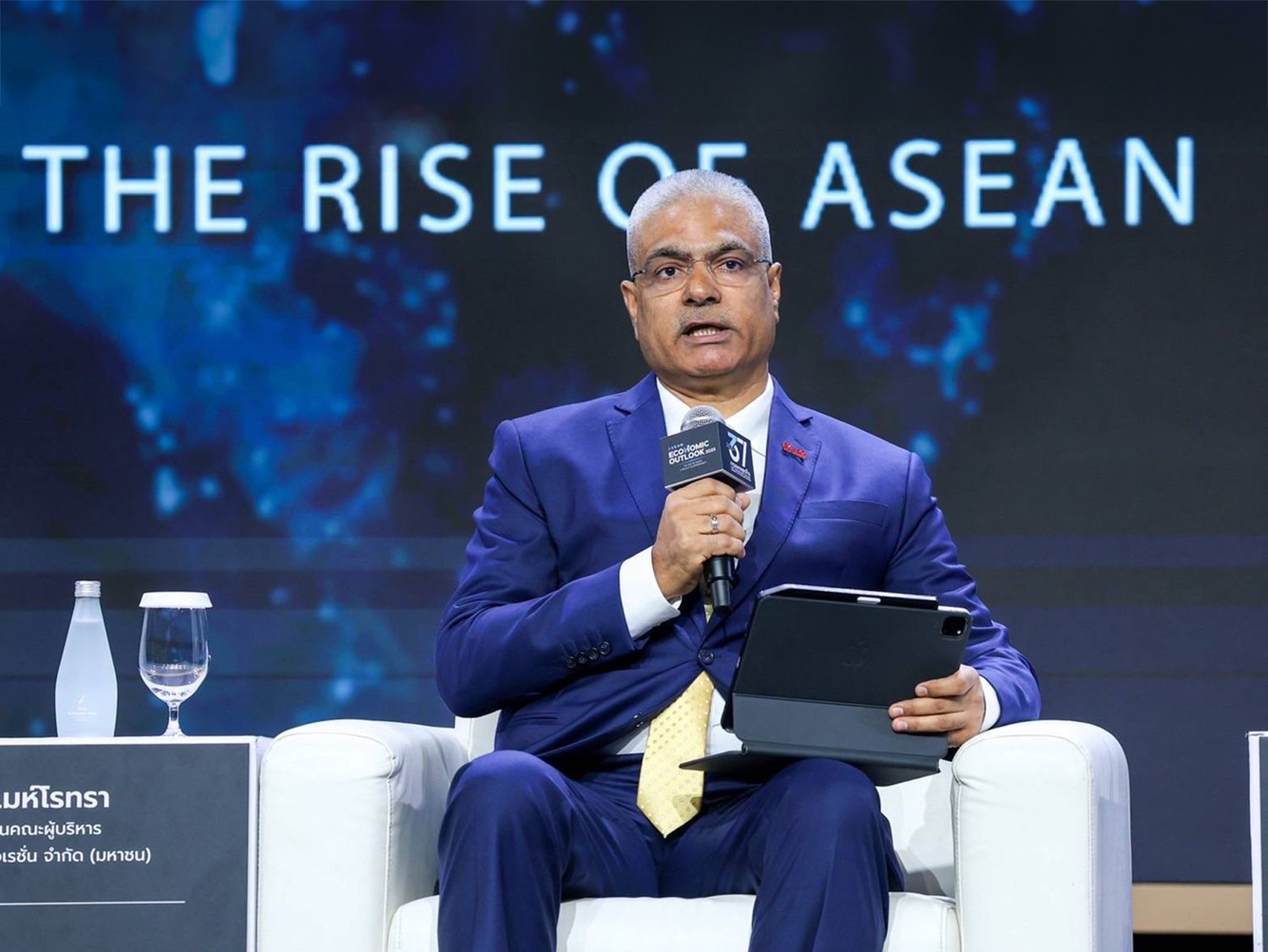The world’s IT giants Microsoft and LinkedIn have recently released the 2024 Work Trend Index Annual Report. According to its findings, 2024 is “The Year AI at Work Gets Real” for the 31,000 employees surveyed in 31 countries. Respondents are keen to use AI or artificial intelligence for greater work efficiency. They already use artificial intelligence several times a week and report that AI can save them 30 minutes a day on average. They also say AI can enhance their potential and career opportunities.
In pursuit of its goal to become a telco-tech company, and to meet the changing needs of both its customers and employees, “True Corporation” is implementing an AI-first organization strategy. At the “AI Gets Real” event, True presented the latest developments of its AI innovation for customer services, shared by Piyapan Nakayothin, Head of Customer Services, and Bandith Pangpong, Head of IT and Security.
Humanizing Automation Responsibly
Piyapan explained that to become a telco-tech company, customer centricity is at the core of True’s operation. The company is firmly committed to continuous product and service development for better customer experience. Since 2014, when its virtual agent “Mari” came into service, its capabilities have increased dramatically. At present, Mari can support online chats and voice conversations in natural language with the help of AI technology.

“Our new version of Mari is more human. It understands more complex language complexity, is more accurate, and can recommend services with greater accuracy,” Piyapan said. “In the past, True’s Call Center used IVR (Interactive Voice Response) in responding to customers’ requests. Customers only needed to press a specific number to confirm what they wanted. However, IVR could offer just limited choices. It also took customers a relatively long time to complete a single transaction via IVR. Mari has practically removed customers’ pain points in this aspect as its enhanced capabilities mean it can serve customers with greater accuracy at a faster speed.”
Although Gen AI has revolutionized the way of working, Bandith emphasized that AI must be used responsibly.
- To “assist” customers and staff, Mari must have access to customer data. True requires Mari to fully comply with data and IT governance. This is the top priority at True Corporation.
- Mari will answer questions only when it can give clear-cut answers. If the AI feels unconfident, Mari will automatically let human staff take over. The rule is designed to prevent AI “hallucinations,” which may lead to mistakes or misinformation affecting customers.
- Mari in voicebot mode still has some limitations. For example, a noisy environment may confuse Mari. It may not understand what customers are saying. Voicebot, after all, is a new technology but True is determined to develop its voicebot further.

Working in the AI Era
Bandith said that with its significant evolution, AI now has more roles to play. The Customer Services Department is in charge of designing the Mari voice bot, while the Marketing Department utilizes Mari for its chatbot and personalization. The IT Department, meanwhile, has fed data for Mari’s training so that this virtual AI-powered agent becomes more knowledgeable and gets better every single day. The Network Department has integrated AI too, using it to power a smart grid in the best interests of customers.
Recognizing the importance of AI, True has also invested in ChatGPT Enterprise. Staff thus have opportunities to try and learn from ChatGPT Enterprise from its very first versions. Programs at True have also been upgraded to AI-powered versions. True, moreover, has invested in data centers to boost AI performance and processing power.
In the eyes of Piyapan, AI influence will grow across various work functions. So, staff must reskill. For example, customer service staff will need a new set of skills to transform themselves into Mari developers and to have greater customer insights. Many segments of customers still need the care of attentive human staff.
“At a closer look, you should realize that Mari’s real role is being an ‘assistant’ or a co-pilot. It offers suggestions to staff who then can bypass the need to search for information on multiple platforms. As a result, they can deliver services faster with good standards, all while reducing the number of human errors,” Piyapan explained.

Mari’s Next Steps
“Because customers have different needs, True must respond to the individual needs of each customer group. For example, we will train Mari to avoid certain tech terms when serving elderly customers. Mari is expected to adjust its communication approach through self-learning to best respond to each group of customers,” Piyapan revealed.
Bandith added that his team expected Mari to provide customers with deeper insights into the network. True has planned to integrate two data sets: one about customers and the other about the network. Integrating both dimensions will pave the way for Mari to answer network-related questions and resolve network issues for customers effectively.
“Normally, when customers ask about our network, our human staff will take charge. It is difficult to investigate network issues within a short time. However, by integrating network and customer data sets, Mari can identify the root cause of troubleshooting and offer solutions much faster,” Bandith said.
Piyapan concluded that in the face of fast-changing and growing expectations, Mari promises to deliver a better customer experience and can efficiently solve problems in a personalized style.




